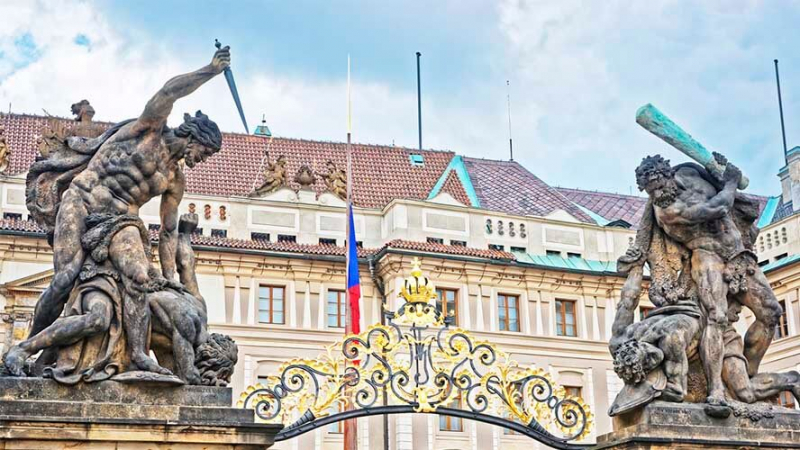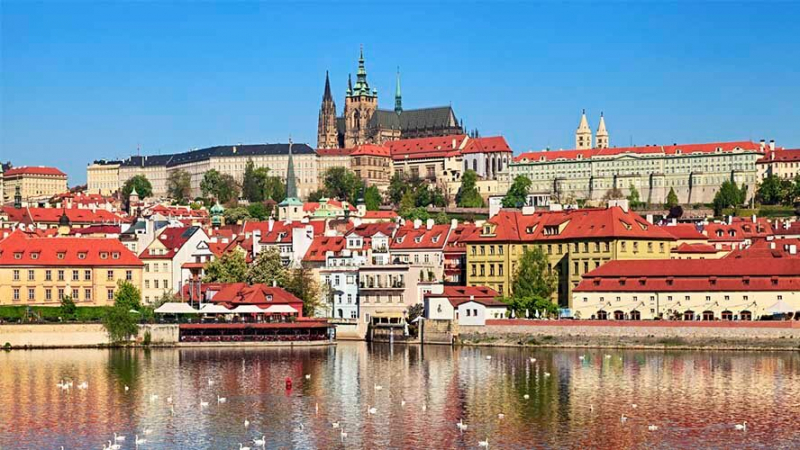Prague of Czech Republic

Prague has begun in the ninth century at the hands of Prince Borivoj. In addition to the castle, he ordered for a palace, three churches, and a monastery to be built, among other landmark buildings. Under Rudolf II, the castle enjoyed its greatest moment of splendor. This was also the last member of the House of Habsburg to use it as their main residence. Although it has occurred many fires and invasions, all of the churches, chapels, halls, and towers have survived. Since 1918, Prague Castle has been the official residence of the presidents of the Czech Republic.
The Guinness Book of Records claims that Prague Castle is the largest ancient castle in the world. Spanning a length of 570 meters, the complex is over seven times the size of a football pitch, while the area containing the castle spans 45 hectares (45.000 m2). Because the building is old, Prague Castle has had to undergo significant restoration work. The first project was carried out by Prince Sobéslav in the twelfth century, followed by more restoration work in the wake of the 1541 fire. The third revamp took place under Empress Maria Theresa (1740–1780) and the castle underwent its final refurbishment in 1920 at the order of President Masaryk.
The castle’s main entrance with salient points is the contrast between the golden Baroque balustrade of the staircase and the simplicity of Plecník’s staircase. Besides, there are replicas of Ferdinand Platzer’s Battle of the Titans sculptures. The first courtyard, where there is the magnificent Matthias Gate (1614), is the oldest Baroque monument in the Czech Republic. The second courtyard has a Baroque fountain in the centre and a well dating from the seventeenth century with a beautiful iron gate. It is also home to the Chapel of the Holy Cross — housed within the former sacristy of St Vitus Cathedral and today home to the gift shop — as well as the Spanish Hall and the Rudolph Gallery, which are reserved for state receptions. The third courtyard of Prague Castle was built by a granite monolith (1928), created in memory of the victims of the First World War, and a replica of the bronze sculpture of the statue of St George. Here, it included the Old Royal Palace (1135), and the Vladislav Hall, where all the presidents of the Czech Republic have been sworn in.
Source: https://www.barcelo.com/guia-turismo/en/czech-republic/praga/things-to-do/prague-castle/











